
|

Scalable Big Data Management Systems
My research goal on big data management and analytics is to address the research challenges for
delivering effective, scalable and high performance software systems for managing, querying and mining
complex big data at multiple dimensions, including 2D and 3D spatial and imaging data, temporal data,
spatial-temporal data, and sequencing data.
Project website: https://lensplatform.github.io/ 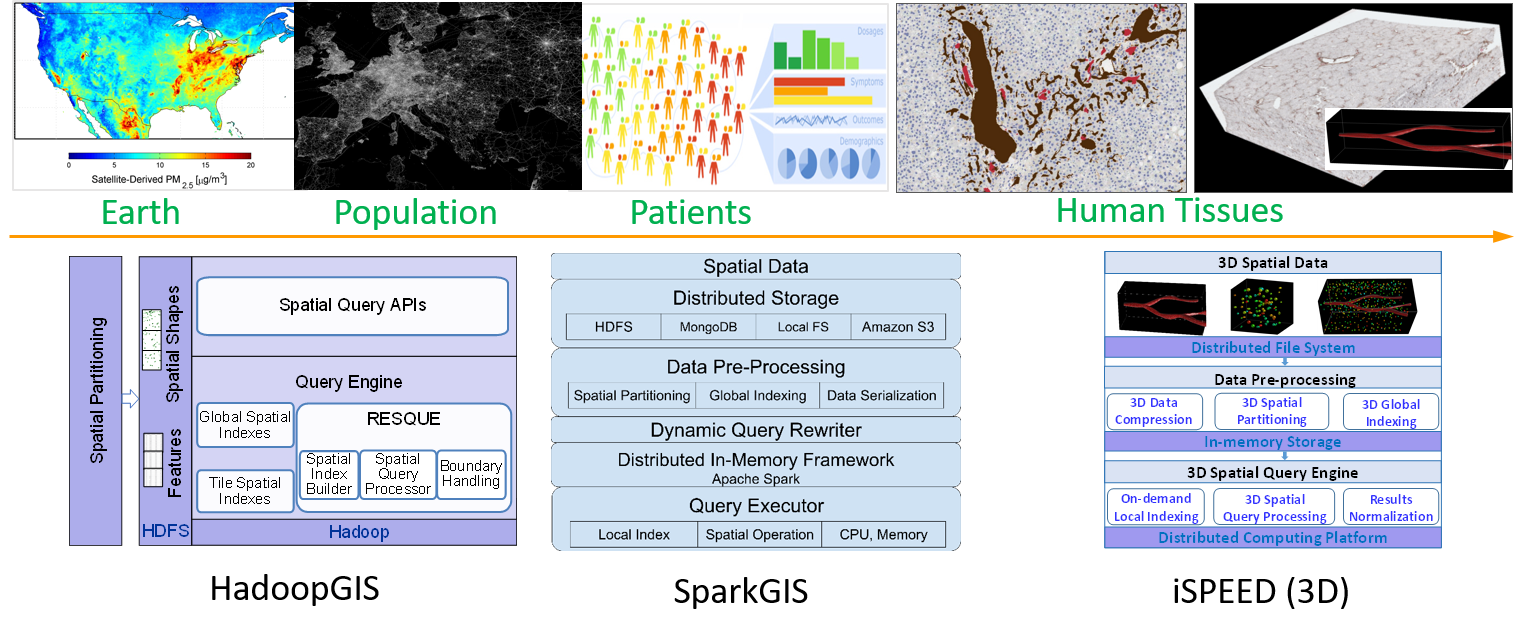
|
||

Computational Digital Pathology (2D and 3D)
Systematic analysis of large-scale whole slide image data can involve many interrelated analyses on large amount of images,
generating tremendous amount of quantifications such as shape and texture, classifications of the quantified features,
and spatial queries to discover spatial relationships and patterns.
Our research focuses on spatial and image analytics at extreme scale.
Project website: lensframework.github.io 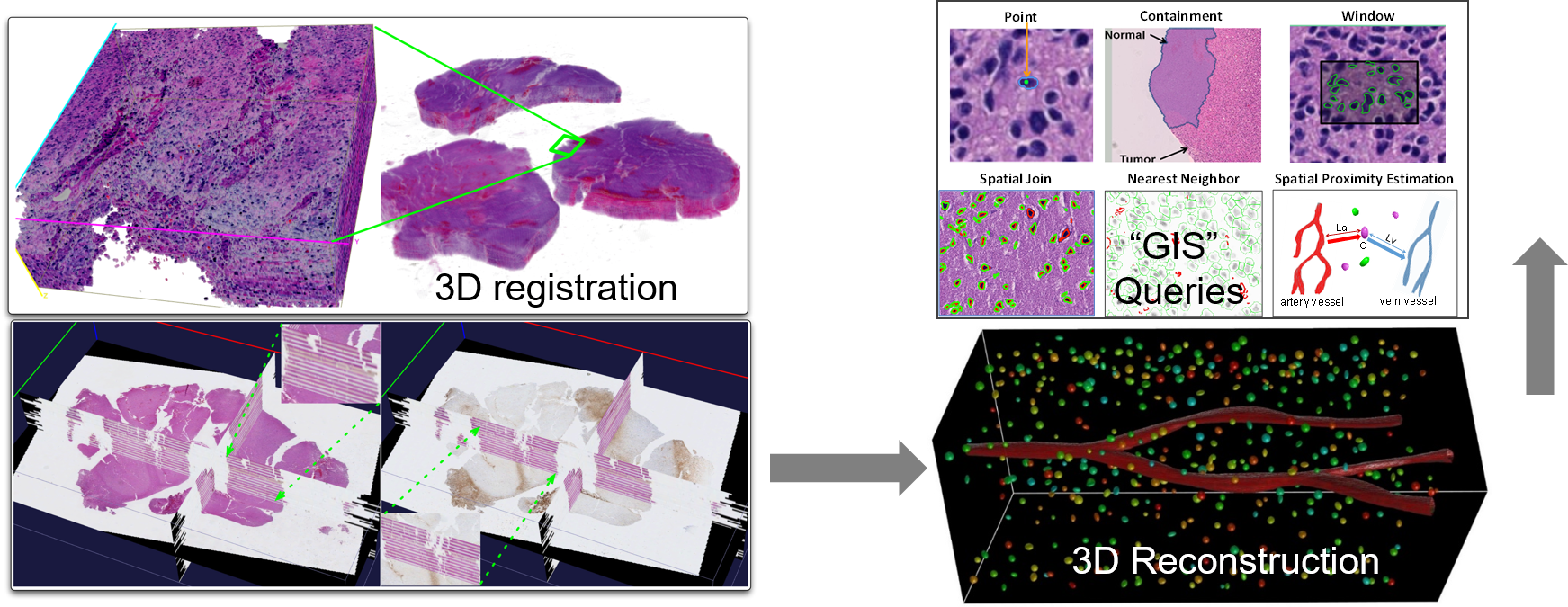 |
||

Big Data and AI Driven Opioid Epidemic Research
The United States is experiencing an opioid crisis, with an estimated 10 million people aged 12 or older misusing opioids,
and 130 deaths a day from opioid overdose (OD). The estimated economic burden of the opioid epidemic is approximately 78.5 billion dollars per year.
We take an integrative big data driven approach by integrating multi-scale data such as electronic health records, social media and the Web,
social-economic data and government policies for spatial-temporal and text analytics and preditive modeling. We have developed various machine
learning/deep learning based models on opioid overdose and opioid use disorder prediction, understanding geospatial patterns and disparities,
and discovering novel opioid antagonists.
Project website: http://ai4oe.github.io 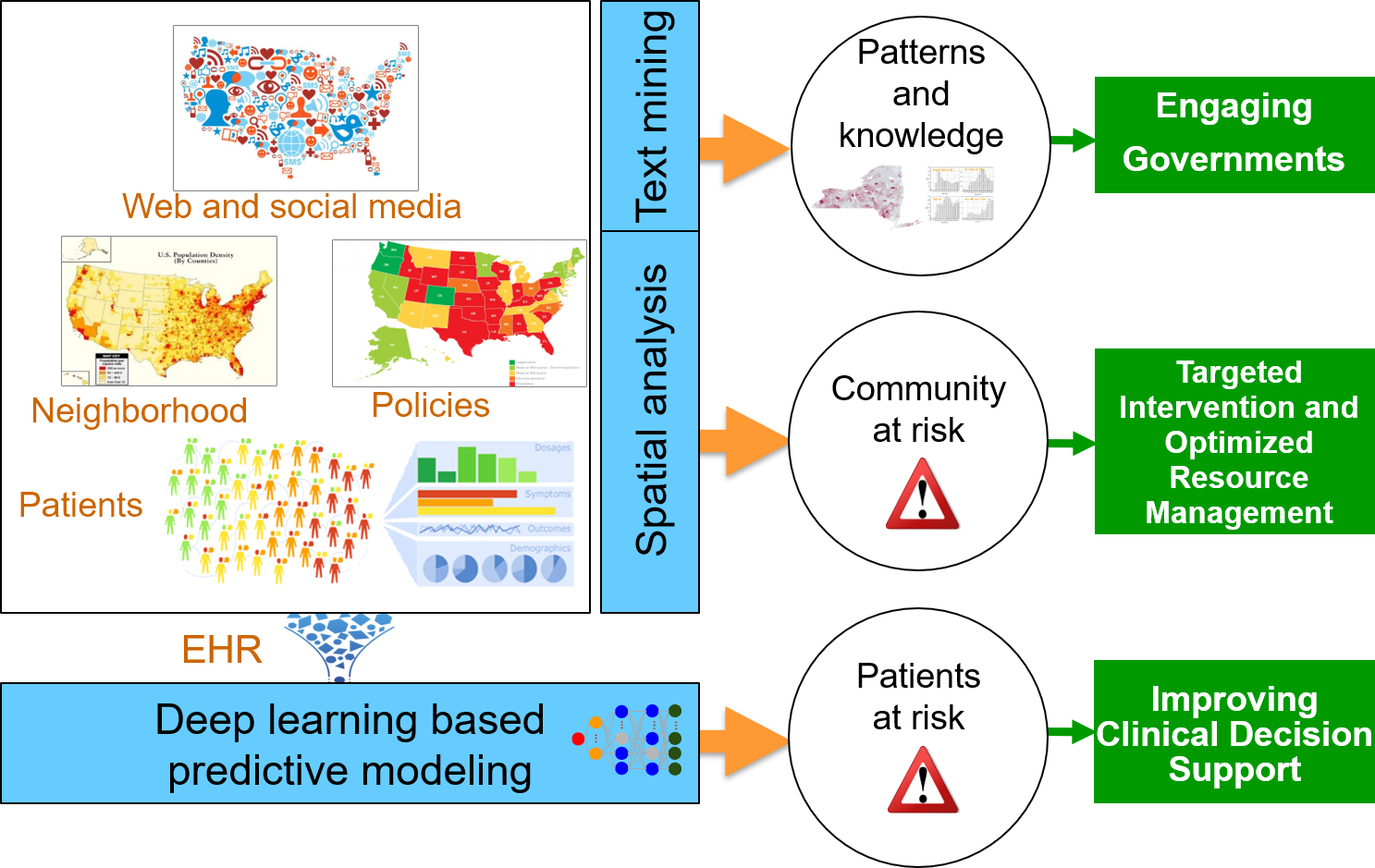 |
||

EyeCanDo
EyeCanDo is the next generation communication platform to enable communication using eye gaze and brain
computer interfaces (BCI), with affordable off-the-shelf devices. People with motor disabilities (e.g., ALS patients) will
be able to use the system to maximize their capabilities for communication using their choice of
comfortable modality. EyeCanDo is built upon AI-powered interactions, machine learning and augmented
reality, available on iOS devices (iPad and iPhone).
EyeCanDo is funded by ALS Association and DOD CDMRP. Project website: http://eyecando.org 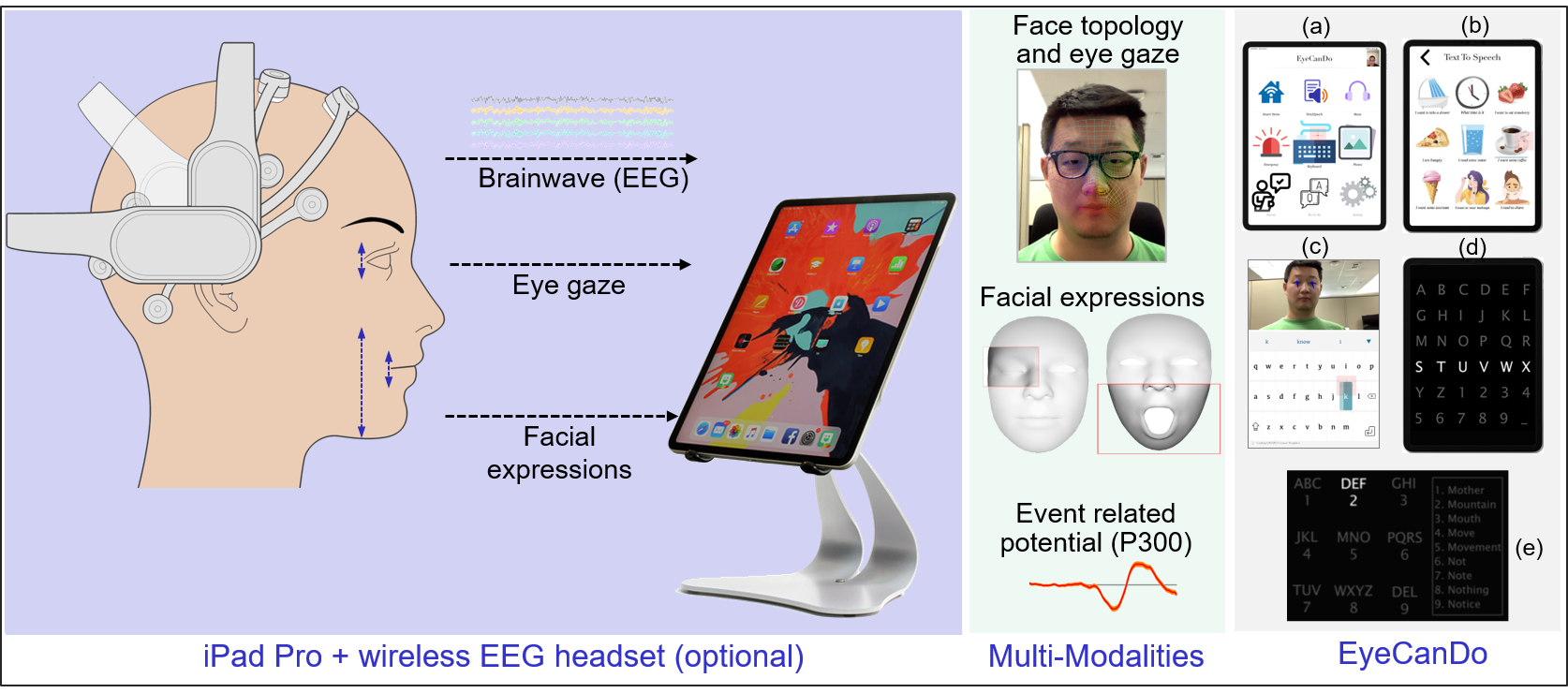 |
||

Blockchain for Eletronic Health Records
Electronic health records (EHRs) are critical information for diagnosis and treatment in healthcare,
which need to be frequently distributed and shared among peers such as healthcare providers, insurance companies,
pharmacies, researchers, and patient families, among others.
However, EHR data are highly private and sensitive, which poses major challenges for current healthcare
data sharing infrastructures. Current sharing of EHR data is often a tedious manual process,
which can lead to significant turnaround time.
A patient centric, blockchain based EHR sharing system with permissioned blockchain framework with immutable and transparent ledger will help manage authentication, confidentiality, and accountability for EHR data sharing, achieving a secure, and trustable EHR management infrastructure. 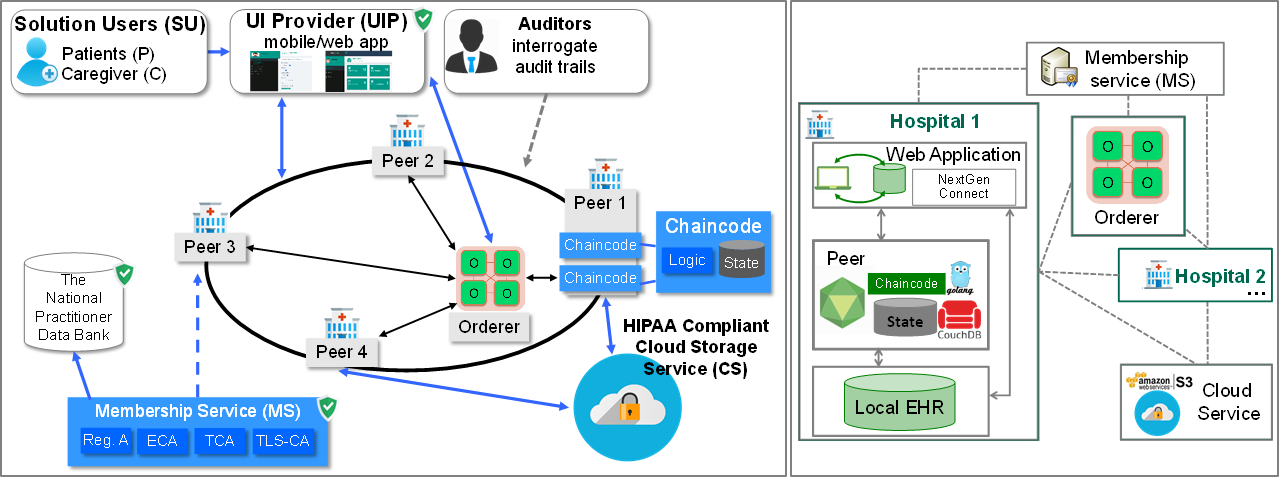 |